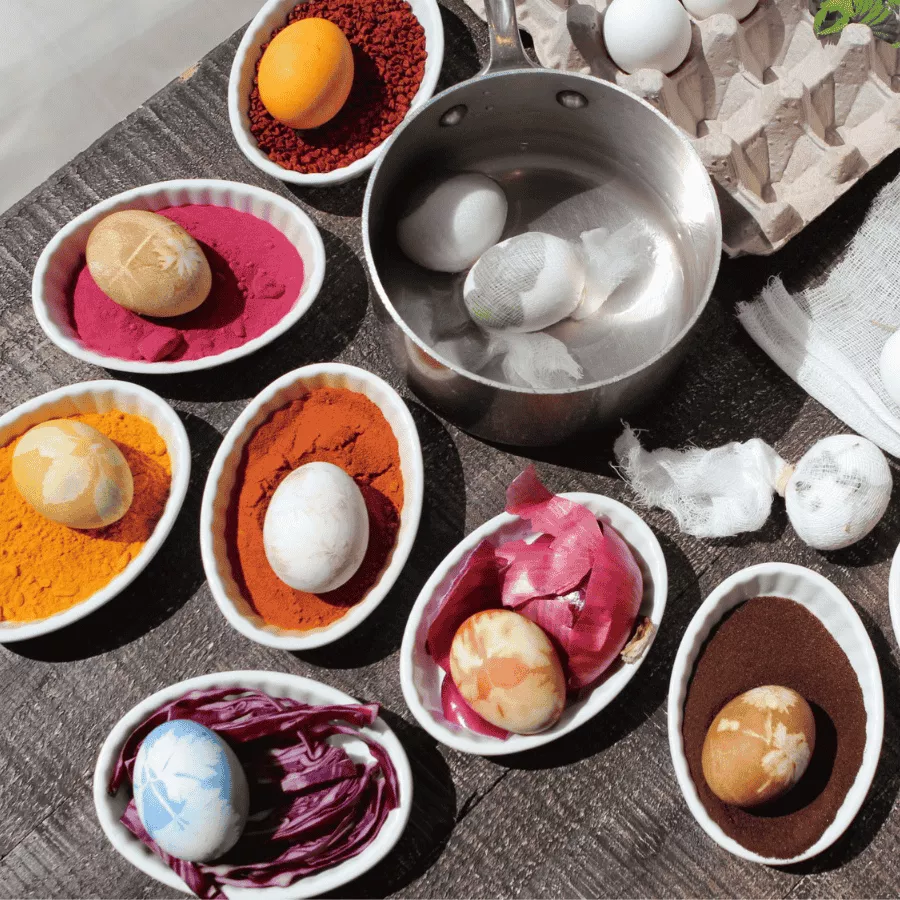Chef Jürgen tested out several methods to add color to eggs using natural dyes. Here's what worked — and what didn't.
Easter is upon us, along with a bounty of egg-related traditions. Among them: egg decorating. Chef Jürgen David, ICE's Director of Pastry Research and Development, investigated how to take a natural approach to dyeing eggs, using coloring agents like beet powder and green tea.
Chef Jürgen tried out several methods, attempting to find the most streamlined approach. This is the process he found most effective:
1. On a piece of cheesecloth, place herb leaves to create a design.
In the spirit of using natural ingredients, Chef Jürgen used herbs from ICE's hydroponic garden to create designs on the eggs. The leaves cover part of the egg, keeping that portion white while the rest of it is dyed. The best method is to lay the herbs on the cheesecloth and wrap around the egg, rather than placing the herbs on the egg directly.
2. Wrap egg in cheesecloth. Pull together with a rubber band.
3. Place cold egg in an inch of cold water and white vinegar.
The vinegar is a key component to the dye mixture. It's what makes the color actually stick to the egg.
4. Add desired dye.
The color achieved by each ingredient is not always intuitive. Red cabbage makes blue. Hibiscus makes gray. Bull's blood beet powder results in a gray-pink color.
Chef Jürgen thought getting a red dye would be easy, but it was one of the more challenging colors. Bulls blood beets are known for their deep red color. They stained everything red...except the eggs.
5. Boil for approximately five minutes.
6. Remove from heat and cover in foil.
Let the eggs cool at room temperature. Only put the eggs in the refrigerator after they are already cool.
7. Let sit overnight.
Artificial dyes only take a few minutes to add color to the egg. When using natural dyes, the egg needs to spend several hours in the dye mixture to achieve a noticeable color.
9. Remove egg from dye and unwrap cheesecloth.
Removing the cheesecloth and the herb leaves will reveal your eggs final color and design. Voilà: naturally dyed and decorated Easter eggs.




